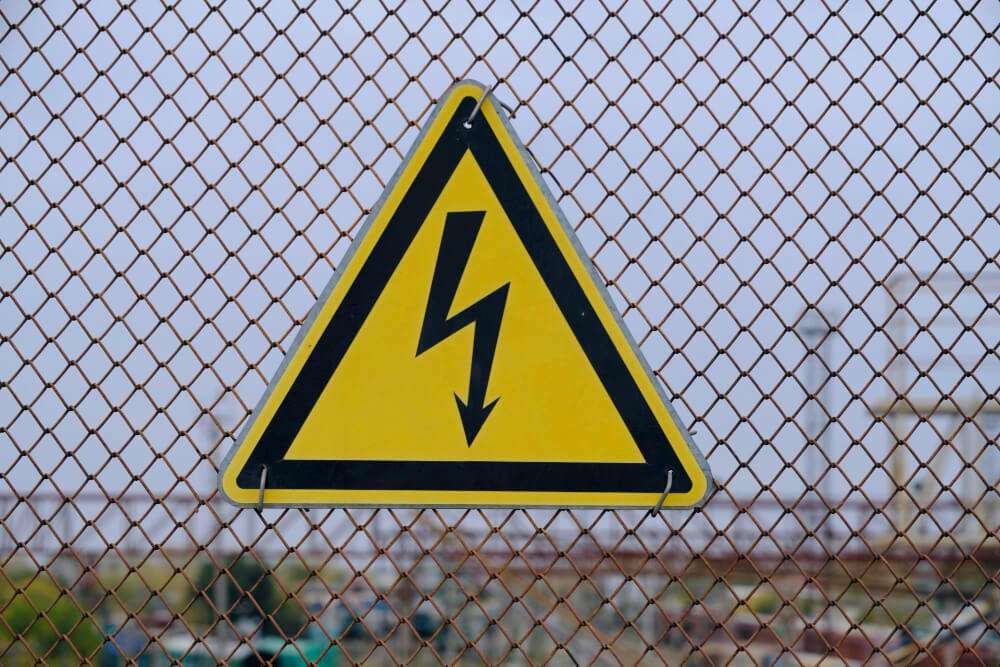
In today’s world, electricity is an essential component of daily operations. Whether it’s home or workplace, we are heavily dependent on electricity. However, it also poses significant risks if not properly managed. Electrical injuries can range from shocks and burns to falls and even electrocution. To ensure the safety of employees, it is crucial to implement effective electrical safety practices and provide adequate training.
This blog will explore everyday workplace electrical injuries and provide actionable tips to prevent electrical incidents.
Types Of Workplace Electrical Injuries

- Electric Shock: When the person comes into contact with an open electric circuit, it can result in electric shock. The electric current passing through the body can cause severe pain, burns, tissue damage, nerve injuries, and muscle damage.
- Burns: Exposure to electrical current or heat generated from electric arcs can cause burns to the skin and internal tissues. These burns can range from minor to severe, depending on the intensity and duration of exposure.
- Falls: Electrical injuries can also occur due to falls resulting from contact with energized conductors or circuits. When electricity arcs through the air and passes through a grounded person, it can lead to falls, resulting in various injuries.
- Electrocution: Electrocution refers to death caused by electrical shock. It is a severe consequence of electrical injuries and emphasizes the importance of implementing effective electrical safety measures.
Common Electrical Hazards in the Workplace
To prevent workplace electrical injuries, awareness of common electrical hazards is crucial. Take a look at the most common electrical hazards:
1.Poorly Installed Or Faulty Electrical Equipment
Inadequately installed or malfunctioning electrical equipment poses a significant risk. Regular inspections and maintenance are necessary to ensure all electrical equipment works properly.
2.Faulty Wiring
Faulty wiring can lead to electrical malfunctions, including short circuits, sparks, and even fires. Hiring qualified professionals for electrical installations and promptly addressing any wiring issues is essential.
3.Overloaded Outlets
Overloading electrical outlets with multiple devices or using them for high-power equipment can cause overheating, leading to electrical hazards. Distribute the load evenly and avoid using extension cords or power strips excessively.
4.Improper Use Of Replacement Fuses
Incorrectly replacing fuses or using ones with higher amperage ratings than recommended can lead to electrical system failures and potential hazards. Follow the manufacturer’s guidelines and only use approved replacement fuses.
5.Use Of Electrical Equipment In Wet Conditions
Operating electrical equipment with wet hands or near water sources increases the risk of electrical shock. Ensure that all electrical equipment is kept away from moisture or use appropriate safety measures when working in wet conditions.
Tips to Prevent Workplace Electrical Incidents

1.Unplug Or Switch Off Electrical Appliances
Unplug or switch off electrical appliances when not in use or during cleaning, repairs, or servicing. This practice reduces the risk of accidental electrical shocks or equipment malfunctions.
2.Ensure Proper Shutdown At The End of the Day
All electrical appliances are turned off before leaving the workplace. This habit conserves energy and prevents potential hazards due to devices being left on overnight.
3.Avoid Forcibly Plugging Into Outlet
If a plug does not fit into an outlet, do not force it. Forcing a plug into an incompatible outlet can damage the electrical equipment and increase the risk of electrical shocks or fires.
4.Proper Cord Management
Avoid running electrical cords across doorways, under carpets, or in areas with high foot traffic. These practices minimize the risk of tripping over cords and damaging them, reducing the likelihood of electrical hazards.
5.Maintain Clearance Around Electrical Panels
Maintain a clearance of at least 3 feet around all electrical panels. This clearance allows for safe access to the panels and reduces the risk of accidental contact with energized parts.
6.Use Double-Insulated Equipment
Use electrical equipment that is double-insulated and adequately grounded to ensure safety.
Double insulation provides an extra layer of protection against electrical shocks, and grounding helps redirect electrical currents away from the user.
7.Avoid Overloading Outlets
Overloading outlets with excessive electrical devices can lead to overheating and potential electrical hazards.
Use power strips or extension cords sparingly and distribute the load evenly across multiple outlets.
8.Use Approved Equipment
Only use electrical equipment that a national testing laboratory approves. Such approved products undergo rigorous testing to meet safety standards.
Trusted electrical liquidators can be a reliable source for purchasing good quality electrical surplus materials.
9.Pay Attention To Warning Signs
Be vigilant for warning signs of electrical malfunctions, such as equipment heating up, sparking, smoking, or making unusual noises.
If any signs are observed, immediately remove the equipment from service and report it to the appropriate personnel.
10.Regularly Inspect Cords
Perform regular inspections to check for defects in cords and equipment. Any damaged or frayed cables should be replaced immediately.
Reporting defects ensures timely repairs and prevents potential hazards.
11.Guard Exposed Electrical Components
To prevent accidental contact, cover or guard exposed electrical components or wires. This physical barrier reduces the risk of electrical shocks or burns.
12.Proper Unplugging Techniques
When unplugging electrical equipment, grip the plug itself and pull it out. Avoid pulling the cord from a distance, as this can strain the cable and damage the electrical connection.
13.Avoid Wet Hands
Never use electrical equipment or appliances with wet hands or near water and wet surfaces. Moisture increases the conductivity of electricity and significantly raises the risk of electrical shock.
Additional Resources For Electrical Safety
Organizations can explore additional resources and tools to further enhance electrical safety in the workplace. Take a look at some recommendations:
1.Electrical Safety Courses
Consider enrolling employees in electrical safety courses that provide in-depth knowledge and practical guidance on electrical safety practices.
These courses cover lockout/tagout procedures, proper personal protective equipment (PPE) use, and electrical hazard identification.
2.Electrical Inspection Software
Utilize electrical inspection software to streamline the inspection process and ensure compliance with electrical safety regulations.
These digital tools help schedule inspections, record findings, generate comprehensive reports, and track corrective actions.
3.Regular Safety Meetings
Conduct regular safety meetings to discuss electrical safety topics, share best practices, and address employee concerns.
Such meetings can facilitate open communication and reinforce the importance of electrical safety.
4.Continuous Improvement
Regularly assess and improve electrical safety controls in the workplace. Evaluate the effectiveness of existing safety measures.
Conduct risk assessments and implement necessary improvements based on lessons learned from past incidents.
Conclusion
Electrical safety is paramount in every workplace to prevent injuries and ensure the well-being of employees. Organizations can implement adequate preventive measures by understanding the types of workplace electrical injuries. Moreover, prioritising electrical safety create a safer work environment and protects their most valuable asset, their employees.

